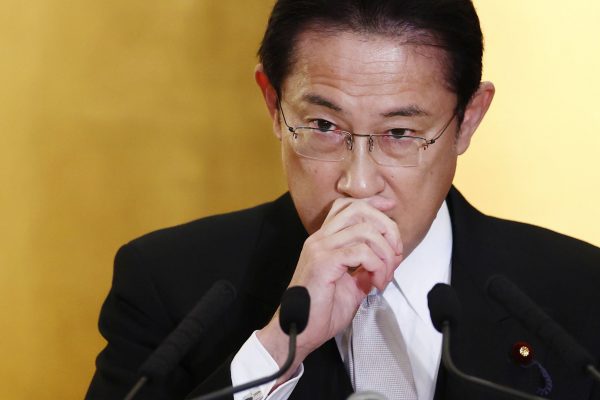The number of infections began to drop sharply in September 2021 and from November through to late-December, daily cases were around 200, the lowest since the start of the pandemic. The state of emergency was lifted in October 2021 and economic activity is now steadily recovering. But the situation is far from reassuring. Virologists are unable to explain the sudden drop over the past months, so we have little basis to assume that the current low infection level will stay for long.
The prospects for 2022 could be anything, depending on how the virus affects life in the coming months, especially with the Omicron variant. The government has tightened border measures, but Omicron appears to be seeping into Japan. This augurs poorly for the government’s current optimistic forecast of 3.2 per cent growth for the 2022 fiscal year (April 2022–March 2023). Still, it is useful to discuss how policymakers are coping with the pandemic’s adverse effects, and whether they are laying the foundations for future growth.
A notable development has been the change in political leadership from Yoshihide Suga to Fumio Kishida in September. When Suga became the prime minister in September 2020, some thought that his low-key but no-nonsense style might enable the government to get necessary reform work done. In spite of his short tenure, a lot was accomplished. Still, Suga lacked critical skills required of the prime minister in a time of national crisis; namely, leadership and communication skills.
In contrast, Kishida’s communication skills are much better, but his skill to lead the nation remains to be seen. His first major policy move was to submit a sweeping supplementary budget to the Diet in December 2021. It had some elements of his new initiative called the ‘new form of capitalism’. Questions are being raised about what this ‘new form’ really is; it has been vaguely described as a ‘virtuous circle of economic growth and more egalitarian income distribution’ and the ‘development of a new post-COVID-19 society’.
Proposing a new big-picture slogan is a promising way to start a new administration. Judging from the agenda of the newly-formed government committee on the ‘new form of capitalism’, most of the right issues seem to be listed.
But making such a list is easy. Finding solutions is far more difficult. In this regard, the initiative is disappointing so far.
The worst among them is a handout of 100,000 yen to families with children aged 18 or younger, presumably to support their education and thus strengthen Japan’s human capital. It is questionable that this money, given once, will do much to affect household spending on education.
The measures were actually conceived by the ruling Liberal Democratic Party’s coalition partner, Komeito, to please voters prior to the lower house elections in October 2021. It is a repeat of a similar measure introduced in 2020 to support families hit by the pandemic, but this time there is no excuse for not designing a better targeted and more efficient support scheme that would meet struggling families’ immediate needs.
Kishida’s next move was to introduce corporate income tax relief for a wage hike. This was motivated by the wide-spread view that stagnant wage growth is the root cause of Japan’s decades of anaemic growth. This view is questionable as wage growth is quite possibly a symptom rather than a cause. Even if there is some truth in it, it is hard to imagine that a one-shot wage increase backed by a one-shot tax relief can be a lasting driver of a so-called virtuous circle of growth and income distribution that the administration is trying to achieve.
In late November 2021, the result of the quinquennial population census was published. Japan’s working age population had declined by more than two million people since the last census. The acceleration of this adverse demographic trend, which will sap Japan’s economic vitality, is one of the few predictions about the future that we can be sure of.
Actions need to be taken to mitigate this trend. Unlike aggregate demand management, effective policies on the economy’s supply side are difficult to find, slower to take effect and susceptible to resistance from vested interest groups. Kishida has presented himself as a ‘good listener’, the antithesis to Suga’s top-down management style. However, necessary supply-side reform measures cannot be implemented by just listening and responding to people’s complaints. Kishida’s real test is whether he has the vision and ability to get the supply-side reform done.
Key in this regard, and conspicuously missing in the ‘new form of capitalism’ committee agenda, is how to increase workers from abroad, and more fundamentally, how to lower the current high hurdle to permanent immigration. At present, COVID-19 is making it difficult to consider these policies as a realistic option.
This may in fact be convenient for the government because it can put politically sensitive issues aside for now. But if Japan is to strengthen its supply side, the entry of more foreigners into Japan’s labour market will be indispensable. This will create political tension with Japanese workers and citizens, but overcoming such tensions is key to Japan’s ability to secure its prosperity and relevance in a globalised world.
Masahiko Takeda is a senior fellow in the Australia-Japan Research Centre at Crawford School of Public Policy, The Australian National University.
This article is part of an EAF special feature series on 2021 in review and the year ahead.

